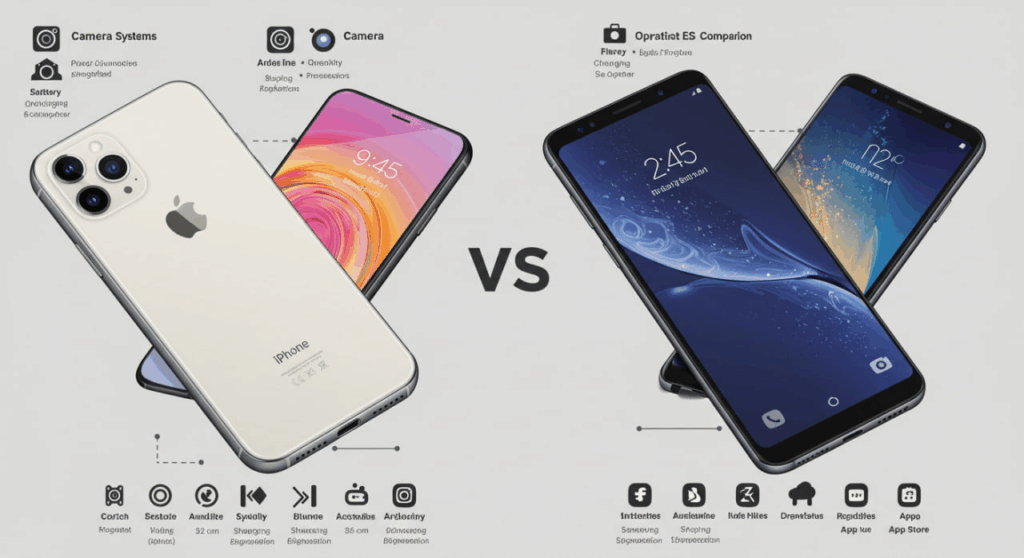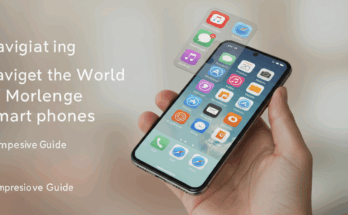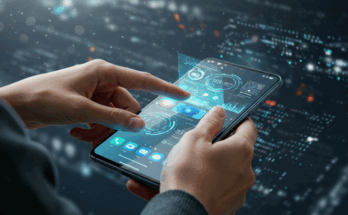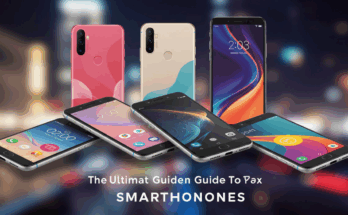In the ever-evolving world of smartphones, two giants consistently dominate the conversation: Apple and Samsung. The iPhone 15, released in 2023, remains a formidable contender in Apple’s lineup, while the Samsung Galaxy S25, launched in January 2025, brings cutting-edge advancements to the Android ecosystem. For tech enthusiasts, casual users, and those on the fence about their next upgrade, choosing between these flagship devices can be daunting. This in-depth comparison dives into the design, performance, camera capabilities, battery life, software, and more to help you decide which phone reigns supreme. Whether you’re loyal to iOS or Android, or simply seeking the best bang for your buck, this review will guide you through every critical aspect of the iPhone 15 and Galaxy S25.
Design and Build Quality
iPhone 15: Sleek Simplicity
The iPhone 15 continues Apple’s tradition of minimalist elegance. Crafted with a glass back and an aluminum frame, it features the Ceramic Shield glass for enhanced durability, which Apple claims is tougher than competitors’ offerings. Measuring 147.6 x 71.6 x 7.8 mm and weighing 171 grams, it’s lightweight and comfortable for one-handed use. The Dynamic Island, a pill-shaped cutout housing the front camera and Face ID sensors, replaces the traditional notch, offering a modern aesthetic and functional notifications. Available in pastel hues like Pink, Yellow, Green, Blue, and Black, the iPhone 15 appeals to those who prefer vibrant yet understated color options. Its IP68 rating ensures resistance to water up to 6 meters for 30 minutes, making it a reliable companion in various environments.
Samsung Galaxy S25: Premium and Compact
The Samsung Galaxy S25 refines its predecessor’s design, shaving off 0.4 mm in thickness to measure 146.9 x 70.5 x 7.2 mm and weighing just 162 grams, making it one of the most compact flagships of 2025. Its aluminum frame is paired with Gorilla Glass Victus 2 on both the front and back, offering robust protection against scratches and drops. The S25’s sleek, flat-edged design and vibrant color options—such as Icy Blue, Navy, Mint, and exclusive shades like Coral Red via Samsung’s website—cater to bold and creative personalities. Like the iPhone, it boasts an IP68 rating, though certified for water resistance up to 1.5 meters. The Galaxy S25 feels slightly more pocketable, giving it an edge for users prioritizing portability.
Verdict: Design That Suits Your Style
The iPhone 15’s polished look and pastel palette appeal to those entrenched in Apple’s ecosystem or seeking a universally stylish device. Meanwhile, the Galaxy S25’s lighter, thinner build and diverse color options make it a standout for Android fans or those craving a modern, compact flagship. Your choice depends on whether you lean toward Apple’s refined simplicity or Samsung’s bold customization.
Display: Clarity and Smoothness
iPhone 15: Vibrant but Limited
The iPhone 15 sports a 6.1-inch Super Retina XDR OLED display with a resolution of 2556 x 1179 pixels, delivering a pixel density of 460 PPI. Its vibrant colors, deep blacks, and support for HDR10 and Dolby Vision ensure stunning visuals for movies and games. However, the 60Hz refresh rate feels outdated compared to modern flagships, resulting in less fluid scrolling and animations. With a peak brightness of around 2,000 nits, it performs well in bright sunlight, and the Ceramic Shield adds an extra layer of durability.
Samsung Galaxy S25: A Step Ahead
The Galaxy S25 features a 6.2-inch Dynamic AMOLED 2X display with a Full HD+ resolution of 1080 x 2320 pixels, yielding a slightly lower 416 PPI. Despite the lower resolution, Samsung’s AMOLED technology delivers rich colors and excellent contrast, enhanced by HDR10+ support. The standout feature is the 1-120Hz adaptive refresh rate, which ensures buttery-smooth scrolling and animations while conserving battery life. With a peak brightness of around 1,400 nits, it’s slightly less bright than the iPhone but still performs admirably outdoors. The Gorilla Glass Victus 2 adds robust protection.
Verdict: Smoothness vs. Sharpness
The Galaxy S25 takes the lead with its 120Hz refresh rate, making interactions feel more responsive, especially for gaming and scrolling. The iPhone 15’s higher resolution and brighter display are advantages for media consumption, but its 60Hz refresh rate is a noticeable drawback in 2025. If smoothness is your priority, the S25 wins; for sharper visuals, the iPhone 15 has a slight edge.
Performance: Powerhouse Processors
iPhone 15: A16 Bionic Excellence
Powered by the Apple A16 Bionic chip, the iPhone 15 delivers exceptional performance for everyday tasks, gaming, and multitasking. Built on a 4nm process, the A16 features a 6-core CPU, 5-core GPU, and 16-core Neural Engine, paired with 6GB of RAM. It handles demanding apps like video editors and graphically intensive games like Genshin Impact with ease. While not as powerful as the newer A18 chip in the iPhone 16 series, the A16 remains a top-tier performer, offering seamless iOS 18 performance and efficient power management.
Samsung Galaxy S25: Snapdragon Dominance
The Galaxy S25 is equipped with the Qualcomm Snapdragon 8 Elite for Galaxy, a 3nm chipset with an overclocked CPU and GPU for enhanced performance. Paired with 12GB of LPDDR5X RAM and UFS 4.0 storage (on 256GB and 512GB models), it outperforms the iPhone 15 in multi-core CPU and GPU benchmarks by significant margins—up to 30% in some tests. The S25 handles multitasking, AI-driven features, and gaming with minimal stutters, maintaining frame rates above 86fps in titles like Battleground Mobile. Overheating is well-controlled, with temperatures peaking at 40°C during extended gaming sessions.
Verdict: Raw Power vs. Optimized Efficiency
The Galaxy S25’s Snapdragon 8 Elite and higher RAM give it a clear advantage in raw performance, especially for power users and gamers. However, the iPhone 15’s A16 Bionic, optimized for iOS, delivers a smoother, more consistent experience for most users. If you prioritize raw power, the S25 is the winner; for a polished, efficient ecosystem, the iPhone 15 holds its own.
Camera: Capturing the Moment
iPhone 15: Computational Mastery
The iPhone 15 features a dual-camera system with a 48MP main sensor and a 12MP ultra-wide lens. While it lacks a telephoto lens, Apple’s computational photography excels, producing vibrant, well-balanced images with excellent dynamic range. The 48MP sensor captures detailed shots, and the 2x digital zoom performs admirably for a non-telephoto lens. The ultra-wide lens is solid for landscapes but struggles with color accuracy in low light. The 12MP front camera delivers sharp selfies with natural skin tones. Features like Photographic Styles and ProRaw enhance creative control, making it a favorite for content creators.
Samsung Galaxy S25: Versatile Triple Threat
The Galaxy S25 boasts a triple-camera setup: a 50MP main sensor, a 10MP telephoto with 3x optical zoom, and a 12MP ultra-wide lens. The main camera produces sharp, vivid images with slightly better low-light performance than the iPhone, thanks to improved image processing. The telephoto lens is a game-changer, offering crisp zoomed shots that the iPhone 15 can’t match without digital cropping. The ultra-wide lens performs comparably to the iPhone’s, though Samsung’s colors are slightly more saturated. The 12MP selfie camera with autofocus delivers bright, detailed selfies. Galaxy AI features like Circle to Search and Drawing Assist add creative flexibility.
Verdict: Versatility vs. Consistency
The Galaxy S25’s triple-camera system, with its telephoto lens, offers greater versatility for photography enthusiasts, especially for zoom shots. The iPhone 15’s computational photography ensures consistent, high-quality images with minimal effort, but the lack of a telephoto lens is a limitation. If you value zoom and AI tools, the S25 is superior; for point-and-shoot reliability, the iPhone 15 shines.
Battery Life and Charging
iPhone 15: All-Day Endurance
Apple doesn’t disclose the iPhone 15’s battery capacity, but estimates place it around 3,349mAh. In testing, it lasts around 12-14 hours under typical use, with up to 18 hours of video playback. The A16 chip’s efficiency ensures solid endurance, though heavy gaming or 5G use can drain it faster. Charging is a weak point, with 20W wired charging taking about 90 minutes for a full charge and 15W MagSafe wireless charging. No charger is included, which may frustrate some buyers.
Samsung Galaxy S25: Long-Lasting Power
The Galaxy S25 houses a 4,000mAh battery, offering superior longevity. It lasts over 15 hours in standard use, with up to 24 hours of video playback and 14 hours of gaming. The Snapdragon 8 Elite’s efficiency and adaptive refresh rate contribute to its impressive performance. The S25 supports 25W wired charging, fully charging in about 75 minutes, and 15W wireless charging. Like the iPhone, no charger is included, but the faster charging speed gives it an edge.
Verdict: Battery Life Wins for Samsung
The Galaxy S25’s larger battery and better optimization result in longer endurance, especially for demanding tasks. Its faster charging speed further solidifies its lead. The iPhone 15 offers respectable battery life but falls short in charging speed and overall longevity.
Software and Features
iPhone 15: iOS Ecosystem
Running iOS 18, the iPhone 15 offers a polished, secure experience with seamless integration into Apple’s ecosystem. Features like the Dynamic Island, Face ID, and AirDrop enhance usability, while iOS’s optimization ensures smooth performance. However, Apple Intelligence is not supported, limiting access to advanced AI features. Apple promises at least five years of software updates, ensuring long-term support. The iPhone’s ecosystem is a major draw for users with other Apple devices like the Mac or Apple Watch.
Samsung Galaxy S25: AI-Powered Android
The Galaxy S25 runs Android 15 with One UI 7, offering a customizable interface and robust AI features. Galaxy AI includes tools like Circle to Search, Call Transcript, and Writing Assist, making it a productivity powerhouse. Samsung promises seven years of OS and security updates, outpacing Apple’s commitment. The S25’s open Android ecosystem supports greater flexibility, though it may feel less cohesive than iOS for some users.
Verdict: Ecosystem vs. Innovation
The iPhone 15’s iOS 18 and ecosystem integration are ideal for Apple loyalists, offering a seamless, user-friendly experience. The Galaxy S25’s AI-driven features and longer software support make it a forward-thinking choice for those who value customization and innovation. Your preference for iOS or Android will heavily influence this decision.
Price and Value
The iPhone 15 starts at $699 for 128GB, with 256GB and 512GB options available. Its lower price and strong ecosystem make it a compelling value for Apple users. The Galaxy S25 starts at $799 for 128GB, with 256GB and 512GB variants, often benefiting from Samsung’s storage upgrade promotions. While slightly more expensive, its advanced hardware and AI features justify the cost for Android enthusiasts. Both phones offer premium experiences, but the S25’s superior specs give it a slight edge in value for platform-agnostic buyers.
Final Verdict: Which Should You Choose?
The iPhone 15 and Samsung Galaxy S25 are both exceptional flagships, but they cater to different priorities. The iPhone 15 is the go-to choice for those invested in Apple’s ecosystem, offering a polished design, reliable performance, and excellent cameras for point-and-shoot photography. Its lower price and seamless integration with devices like the Apple Watch make it a safe bet. However, its 60Hz display and slower charging feel dated in 2025.
The Galaxy S25, with its 120Hz display, powerful Snapdragon 8 Elite, versatile cameras, and AI-driven features, is the better choice for power users, gamers, and those seeking a future-proof Android device. Its longer software support and superior battery life add to its appeal. If you’re platform-agnostic and want cutting-edge tech, the S25 is the clear winner.
Ultimately, your choice depends on your ecosystem preference, budget, and priorities—whether it’s Apple’s cohesive experience or Samsung’s innovative edge.

FAQ
Which phone has better battery life, the iPhone 15 or Galaxy S25?
The Samsung Galaxy S25 has better battery life, lasting over 15 hours in typical use and up to 24 hours for video playback, compared to the iPhone 15’s 12-14 hours and 18 hours of video playback. The S25’s larger 4,000mAh battery and efficient chipset give it the edge.
Does the Galaxy S25 have a better camera than the iPhone 15?
The Galaxy S25’s triple-camera system, including a 10MP telephoto lens with 3x optical zoom, offers greater versatility than the iPhone 15’s dual-camera setup. However, the iPhone 15 excels in computational photography, delivering consistent, high-quality images. Choose the S25 for zoom capabilities, or the iPhone for point-and-shoot reliability.
Is the iPhone 15 worth buying in 2025?
Yes, the iPhone 15 remains a strong choice in 2025, especially at its lower starting price of $699. It offers excellent performance, a polished iOS experience, and reliable cameras. However, its 60Hz display and lack of Apple Intelligence may feel limiting compared to newer flagships like the Galaxy S25.
How long will the Galaxy S25 receive software updates?
Samsung promises seven years of OS and security updates for the Galaxy S25, starting from its January 2025 release. This ensures support until at least 2032, making it a future-proof investment.
Can I use the Galaxy S25 with Apple devices like the Apple Watch?
The Galaxy S25 is not fully compatible with Apple devices like the Apple Watch, which is designed to work primarily with iPhones. For seamless integration with Apple’s ecosystem, the iPhone 15 is the better choice.



